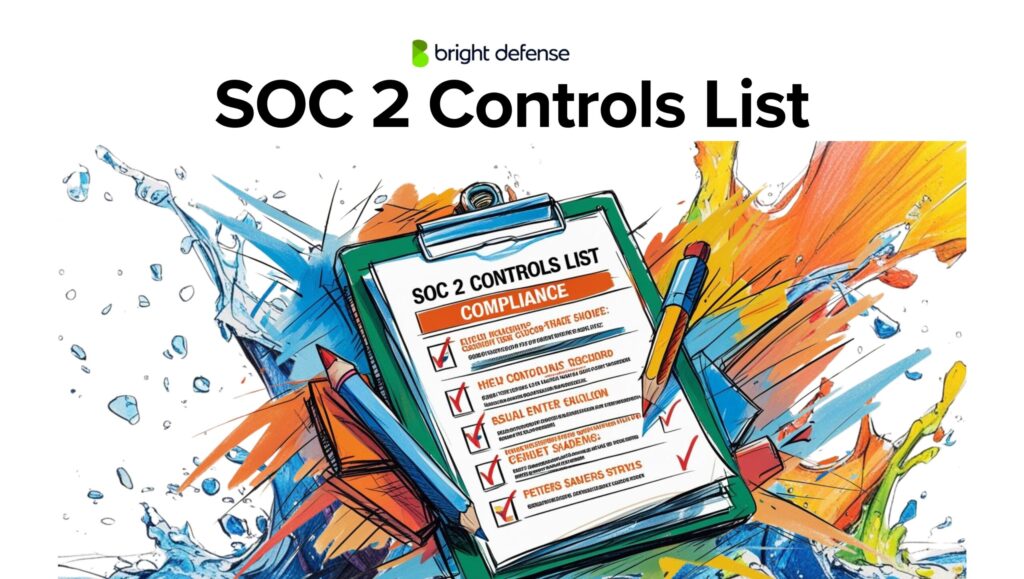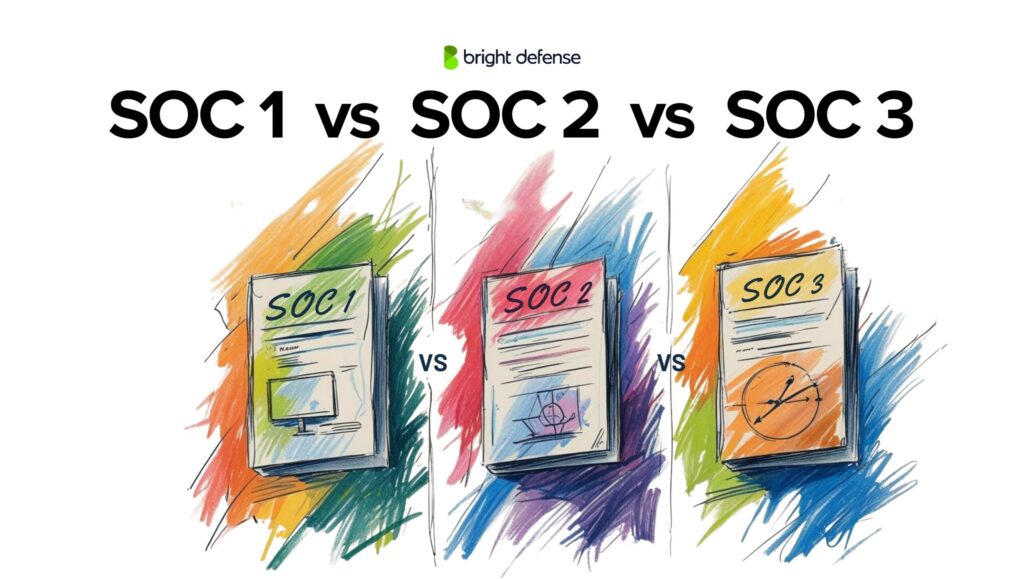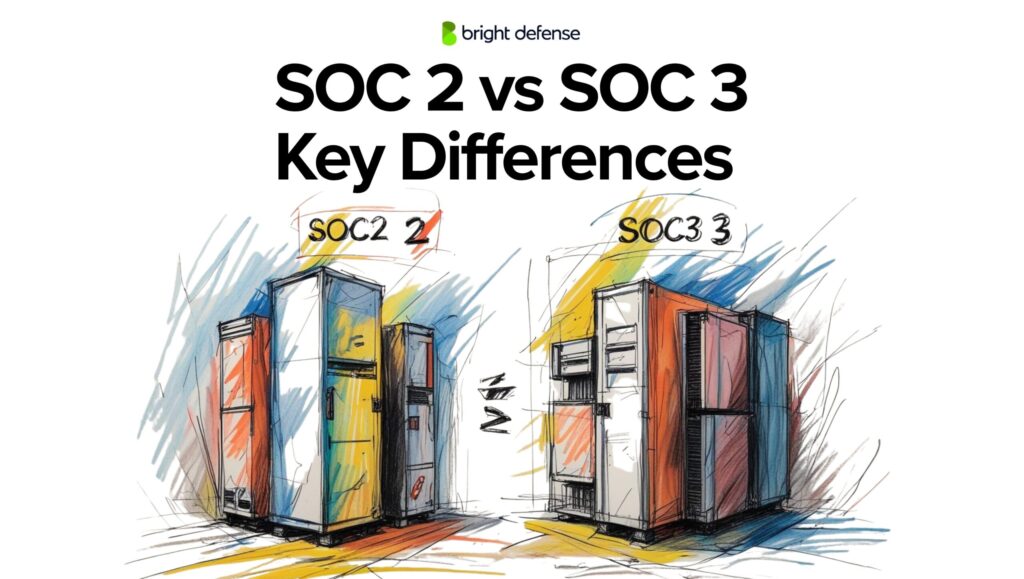
Tim Mektrakarn - CISSP | CISA | ISO 27001
June 28, 2025
The Benefits of SOC 2 Compliance Automation for Data Center and Hosting Providers
Securing clients’ data is a top priority for data centers and web hosting providers. A data breach can ruin the reputation of a provider. A robust cybersecurity compliance program that aligns with frameworks like SOC 2 can help prevent data breaches and demonstrate to clients that you are committed to security. SOC 2 compliance automation simplifies the compliance process, saving time and money.
This article explores the many advantages of SOC 2 automation for data centers and web hosting providers. We’ll show you how it helps them effortlessly and effectively meet the rigorous requirements of SOC 2 frameworks and lowers the cost and effort in compliance. We’ll also discuss how Bright Defense’s continuous compliance services can help you in your SOC 2 journey. Let’s get started!
Understanding SOC 2 Compliance
SOC 2, short for Service Organization Control 2, is a widely recognized and respected framework for assessing the security, availability, processing integrity, confidentiality, and privacy of customer data. Developed by the American Institute of CPAs (AICPA), SOC 2 compliance focuses on the controls and processes implemented by service organizations to protect the information they handle.
For data centers and web hosting providers, SOC 2 compliance is crucial. It demonstrates their commitment to maintaining a secure and reliable environment for their clients’ data. Achieving SOC 2 compliance involves a rigorous audit process conducted by independent auditors who assess the organization’s adherence to predefined criteria.
These criteria are divided into five trust principles:
- Security: Protecting systems and data against unauthorized access and potential breaches.
- Availability: Ensuring that services and systems are available and operational when needed, minimizing downtime.
- Processing Integrity: Ensuring that data processing is accurate, complete, and free from errors or discrepancies.
- Confidentiality: Safeguarding sensitive data from unauthorized disclosure or access.
- Privacy: Managing personal information by establishing privacy policies and regulations.
By achieving SOC 2 compliance, data centers and web hosting providers gain a competitive edge a. Clients and partners increasingly demand proof of security and compliance. 41% of companies say a lack of continuous compliance slows down sales cycles. Compliance assures stakeholders that the organization has implemented robust controls to protect data and maintain the highest service quality standards.
In this article, we’ll explore how SOC 2 compliance automation tools can simplify and enhance the process for data centers and web hosting providers, helping them stay ahead in the rapidly evolving landscape of data security and compliance.

Introducing SOC 2 Automation
It’s no secret that adhering to complex compliance frameworks can be a challenging endeavor. From the rigorous SOC 2 standards to the labyrinth of industry-specific regulations, the path to compliance often involves navigating a maze of documentation, audits, and meticulous processes.
Enter compliance automation, the game-changing technology revolutionizing how businesses approach and achieve regulatory compliance. Gone are the days of labor-intensive, manual compliance efforts that consumed valuable time and resources. Automation emerges as a formidable ally by streamlining the compliance journey.
Compliance automation refers to using software, tools, and intelligent systems to handle, monitor, and manage compliance-related tasks, processes, and documentation. It’s not just about making compliance easier; it’s about making it smarter and more efficient. Compliance automation software provides benefits for multiple frameworks including SOC 2, CMMC, HIPAA, NIST, and ISO 27001.
The Advantages of SOC 2 Compliance Automation
Let’s dive into the key advantages of SOC 2 compliance automation for web hosting and data center providers.
Enhanced Efficiency and Accuracy
Traditional manual compliance processes are often time-consuming and prone to errors. Automation, on the other hand, brings precision and speed to the equation. By automating routine compliance tasks, data centers and web hosting providers can significantly reduce the margin for human error and allocate their resources more effectively. This results in quicker audits and a higher confidence level in the accuracy of compliance data.
Cost Savings
Implementing SOC 2 compliance automation can lead to substantial cost savings over time. Organizations can reduce the need for dedicated compliance personnel or external consultants by automating labor-intensive tasks. Additionally, automation can help avoid costly penalties that may result from non-compliance.
Real-time Monitoring and Alerts
Compliance is not a one-time effort; it’s an ongoing process. Automation allows for real-time monitoring of systems and controls, providing immediate alerts when anomalies or potential issues are detected. This proactive approach enables organizations to swiftly address security and compliance concerns, minimizing risks and vulnerabilities.
Streamlined Documentation and Reporting
SOC 2 compliance requires meticulous documentation and reporting. Compliance automation simplifies this aspect by automatically generating standardized reports and maintaining an audit trail. It also streamlines the evidence collection and audit process. This minimizes the amount of time required to achieve compliance with your security program.
Scalability and Adaptability
As data centers and web hosting providers grow and evolve, their compliance requirements may change. Automation systems can adapt to these changes, making it easier to scale compliance efforts and incorporate new controls or standards as needed. This scalability is invaluable in a dynamic digital environment.
Improved Security Posture
Compliance automation goes hand in hand with improved security. Organizations can ensure that critical security measures are consistently enforced by automating security controls and processes. This helps protect sensitive data and systems from potential threats and breaches.
Strategies for Automating SOC 2 Compliance
Data Center SOC 2 Automation: Tools and Technologies
Automating SOC 2 compliance in data centers and web hosting services involves integrating technologies designed to streamline compliance. Key tools include:
- Compliance Management Software: These platforms offer a centralized system for tracking and managing compliance tasks, documentation, and audits. They often feature dashboards for real-time compliance status and reminders for important deadlines. Here are some other integrations available on many platforms:
- Integrate with an Identity Provider like Microsoft 365 or Google Workspaces to pull in users with email accounts
- Cross-reference employee information with HRIS systems like BambooHR, ADP, Trinet, Workday, and more
- Integrate with Cloud Providers like Amazon AWS, Google Cloud, and Microsoft Azure to pull in assets and configurations
- Pull MDM configurations from Hexnode, Jamf, JumpCloud, Microsoft Intune, and VMware Workspace One
- Automated Security Monitoring Tools: These tools continuously scan for vulnerabilities and unauthorized changes in the system, ensuring that the security aspect of SOC 2 compliance is constantly upheld.
- Incident Management Systems: Automated incident management systems help in quickly identifying, responding to, and documenting security incidents, a crucial part of maintaining SOC 2 compliance. Kick-off processes in your existing ticket system, such as BMC Remedy, ServiceNow, Ubersmith, or any API-enabled ticketing system / ITSM.
- Cloud-based Audit and Reporting Tools: These tools automate the collection and organization of audit evidence, making the audit process more efficient and less prone to errors.

Implementing SOC 2 Automation for Data Centers
The implementation of automation in SOC 2 compliance involves several steps:
- Assessment and Planning: Conduct an initial assessment to identify the specific SOC 2 requirements and where automation can be most effective. Develop a detailed plan for the implementation process.
- Tool Selection: Choose SOC 2 automation tools that align with your specific needs, considering scalability, ease of use, and integration capabilities with existing systems.
- Integration and Deployment: Integrate the selected tools into the existing infrastructure. This step should be carefully managed to minimize disruptions to ongoing operations.
- Training and Change Management: Provide comprehensive training to staff on using the new tools. Implement change management strategies to ensure smooth adoption of the new systems.
Best Practices in Selecting and Deploying Automation Solutions
When selecting and deploying automation solutions for SOC 2 compliance, consider the following best practices:
- Compatibility and Integration: Ensure the chosen tools are compatible with your existing systems and can be integrated seamlessly.
- Scalability: Choose solutions that can scale with your business and adapt to evolving compliance requirements.
- Vendor Reputation and Support: Opt for solutions from reputable vendors that offer robust support and regular updates.
- User-Friendly Interface: Select tools with intuitive interfaces to facilitate easier adoption and use by your team.
- Customization: Look for tools that offer customization options to tailor the solution to your compliance needs.
- Regular Reviews and Updates: Please review the effectiveness of the automation tools and make necessary adjustments or updates to ensure ongoing compliance.
By strategically implementing these tools and following best practices, data centers and web hosting providers can significantly enhance the efficiency and reliability of their SOC 2 compliance processes.
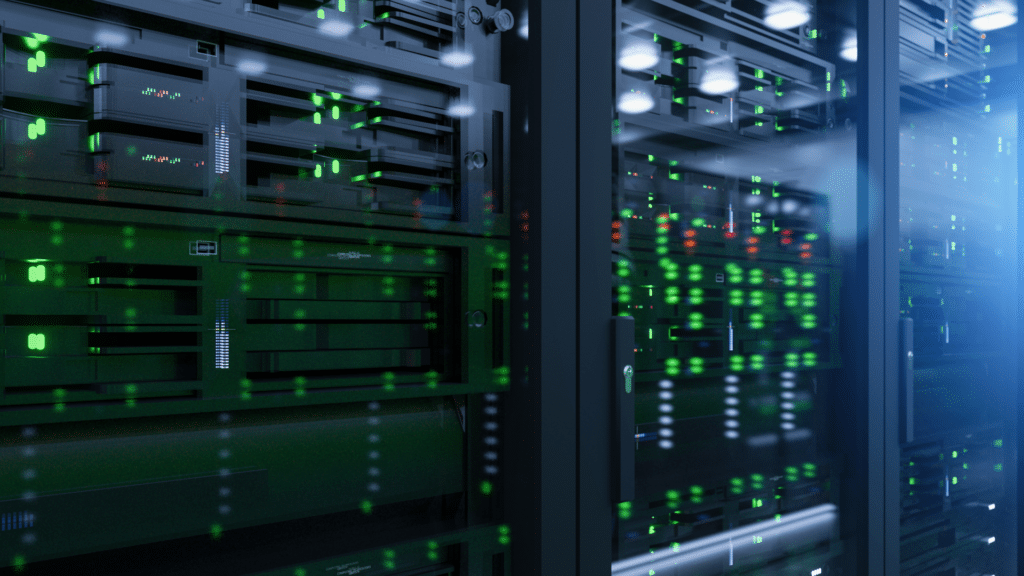
Real-world Examples of Automating SOC 2 Compliance
Integration of Assets from Ubersmith to Drata: A Custom Developed Module
Many Data Centers and Web Hosting Providers utilize Ubersmith or WHMCS. These are both comprehensive tools for managing data centers, web hosting, and other IT services. When combined with compliance automation software like Drata, providers can both streamline their operations and the compliance process. Developing a custom module to facilitate this integration can significantly enhance operational efficiency and compliance management. Here’s an overview of such a module:
Concept and Functionality
The custom module aims to bridge Ubersmith and Drata, allowing for seamless synchronization of assets and data. This integration would enable data centers and web hosting providers to automatically import their asset information from Ubersmith into Drata, thereby streamlining the process of maintaining an up-to-date inventory for SOC 2 compliance.
Key Features of the Custom Module
- Automated Data Synchronization: The module would automatically sync asset data from Ubersmith to Drata, ensuring that the asset inventory in Drata is always current and accurate.
- Custom Mapping of Asset Fields: The module would allow for the customization of how asset fields in Ubersmith correspond to those in Drata, ensuring that the data aligns with the specific requirements of SOC 2 compliance.
- Secure Data Transfer: Given the sensitivity of asset data, the module would employ robust encryption and security protocols to ensure safe data transfer between Ubersmith and Drata.
- Real-Time Updates: Any changes or updates in Ubersmith’s asset inventory would be reflected in Drata in real-time or at scheduled intervals, minimizing the lag in compliance reporting.
- Error Logging and Notification: The module would include error logging and notification mechanisms to alert administrators of any issues during the data synchronization process.
- Compliance Reporting Support: The module would support more accurate and efficient compliance reporting by ensuring that asset data is consistently updated in Drata.

Implementation Considerations
- API Integration: The module would leverage the APIs of both Ubersmith and Drata for data retrieval and updating. This requires an in-depth understanding of both platforms’ API capabilities and limitations.
- Customization Flexibility: The module should be designed with flexibility, allowing it to be customized according to different organizational needs and compliance requirements.
- User Interface and Experience: A user-friendly interface for administrators or compliance officers using the module would be essential for monitoring the integration and managing settings.
- Scalability and Maintenance: The module should be scalable to handle growing amounts of data and require minimal maintenance, with the ability to update as both Ubersmith and Drata evolve their platforms.
- Compliance and Security Standards: The development of the module must adhere to the highest data security and privacy standards, ensuring that it contributes positively to the organization’s overall compliance posture.
Developing a custom module for integrating assets from Ubersmith to Drata represents a strategic investment in automating and streamlining SOC 2 compliance processes. By ensuring real-time, accurate asset tracking and reporting, such a module can significantly reduce the manual effort and potential errors associated with compliance management, thereby enhancing compliance operations’ overall efficiency and reliability.

Future of SOC 2 Compliance in the Era of Automation
Emerging Trends in SOC 2 Compliance and Automation
- Increased Use of AI and Machine Learning: Artificial Intelligence (AI) and Machine Learning (ML) are becoming integral in automating complex compliance tasks. These technologies can analyze vast amounts of data to identify patterns, predict potential compliance issues, and suggest corrective actions, thereby enhancing the efficiency and effectiveness of SOC 2 compliance processes.
- Integration of Continuous Monitoring Tools: Continuous monitoring tools are becoming more sophisticated, offering real-time insights into compliance status. This trend is moving SOC 2 compliance from a periodic audit model to a continuous compliance model, ensuring that data centers and web hosting providers are always audit-ready.
- Cloud-Based Compliance Solutions: The shift towards cloud-based solutions is prominent in SOC 2 compliance. These solutions offer scalability, flexibility, and accessibility, making it easier for organizations to manage their compliance processes regardless of size or resources.
- Automated Incident Response: Automated incident response systems are becoming more prevalent. These systems can detect and respond to security incidents more quickly and efficiently, reducing the risk of non-compliance due to security breaches.
- Blockchain for Enhanced Data Integrity: Blockchain technology is being explored for its potential to enhance data integrity in compliance processes. Its ability to provide a secure and unalterable record of transactions can be invaluable in maintaining transparent and tamper-proof compliance records.
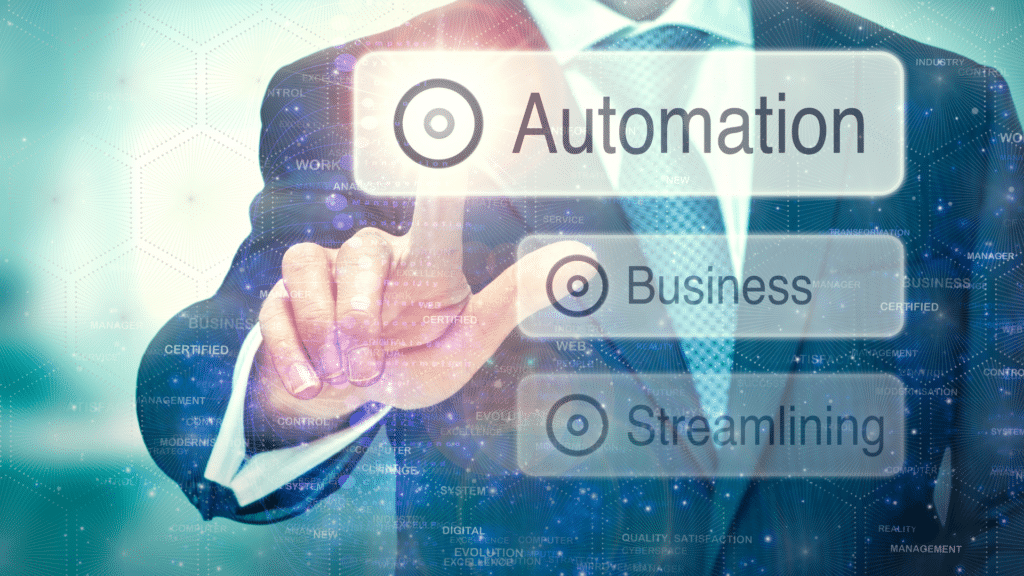
Predictions for the Future of Data Center and Web Hosting Provider Compliance
Below are some predictions for the future of compliance for our customers in the data center and hosting space:
- Greater Emphasis on Data Privacy: With increasing concerns about data privacy, future SOC 2 compliance will likely emphasize privacy controls. This will require data centers and web hosting providers to adopt more advanced privacy-focused technologies and practices.
- Customizable Compliance Frameworks: As businesses become more diverse, there will be a need for more customizable compliance frameworks. Automation tools will likely evolve to offer more tailored compliance solutions that fit the specific needs of different organizations.
- Collaborative Compliance Platforms: The future may see the rise of collaborative platforms where data centers, web hosting providers, and auditors can interact seamlessly. These platforms could facilitate easier sharing of compliance data, streamline the audit process, and enhance transparency.
- Predictive Compliance Analytics: Predictive analytics will significantly identify potential compliance risks before they become issues. This proactive approach will enable organizations to maintain a more consistent compliance posture.
- Integration with Other Regulatory Frameworks: As organizations often need to comply with multiple regulatory frameworks, future SOC 2 compliance tools will likely integrate with other standards and regulations, providing a more unified approach to compliance management.

Bright Defense Delivers Continuous Compliance!
Bright Defense protects our customers from cyber threats through continuous compliance. Our Our monthly engagement model delivers a security program that achieves multiple frameworks, including SOC 2. Our service includes a compliance automation platform which leads to faster audits that are more cost effective. Additionally, we offer other services including gap analysis, risk assessments, security awareness training, and virtual CISO (vCISO) services.
We are also experts in the data center and hosting space. Our founders owned, operated, and held leadership positions in companies including VPLS, Evocative, and Zenlayer. We understand your business and can help you identify gaps and build a security program that exceeds industry standards.
Achieving compliance is important, but it doesn’t have to be painful. Continuous compliance services from Bright Defense, combined with compliance automation software, limits the time consuming, manual tasks allowing you to stay compliant with less effort.
Contact the compliance experts at Bright Defense today to get started!
Get In Touch

